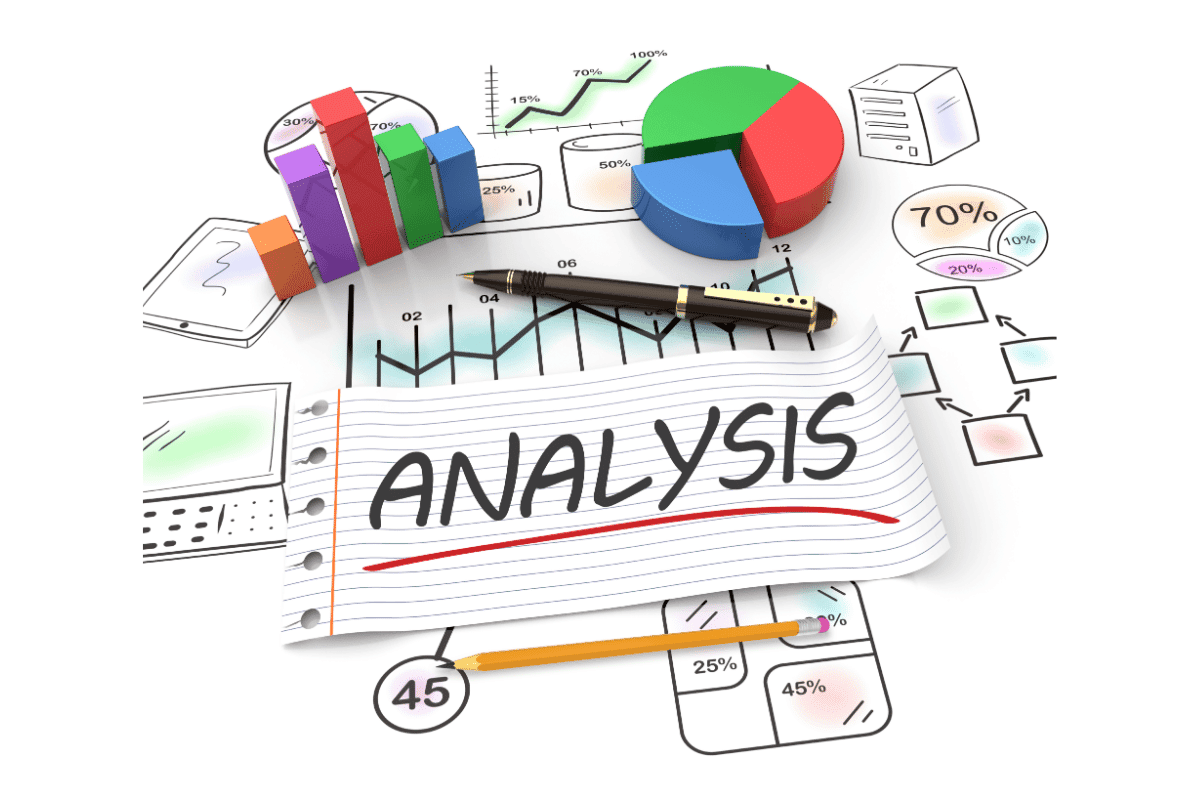How to Effectively Use KPIs in Your Business Strategy
KPIs are more than just metrics; they’re the backbone of successful business strategies. Effective KPIs help measure performance and increase an organizational’ s performance over time. Effectively Using KPIs requires a clear understanding of what they are, how to choose them, and how to use them. Read on for some tips on how to effectively Use KPIs in your business strategy.
Dive in to discover how to effectively use KPIs in your business’ strategy and harness their full potential.
What are KPIs?
Key Performance Indicators (KPIs) are quantifiable metrics that measure progress towards goals and objectives in key areas or control points. KPIs are used to track performance, identify outliers, incentivize positive behavior, and correct or address bad behavior.
Key Takeaways:
- Make sure your KPIs are aligned with your business strategy. Your KPIs should be directly related to your business goals. If they’re not, they won’t be very helpful.
- Keep your KPIs simple. The more complex your KPIs are, the harder they will be to track and manage.
- Set realistic goals. Don’t set yourself up for failure by setting unrealistic goals for your KPIs.
- Track your KPIs regularly. The only way to know if your KPIs are working is to track them regularly.
- Make changes as needed. If your KPIs are not showing the results you want, don’t be afraid to make changes.
How to Set Clear Goals for KPI Targets?
The first step to effectively using KPIs is to set clear goals. What do you want to achieve with your business? Before diving into KPIs, clarify what you’re aiming to gauge. Is it sales KPIs for performance, financial health, project progress, or something else? Once you know your goals, you can choose KPIs that will help you measure your progress towards them.
Knowing what you want to measure and the level of performance or behavior that constitutes success is the prerequisite. With this established, you can then set your benchmark goal. Behind every KPI should be a clear purpose.
For example, if your goal is to increase sales, you may choose KPIs such as revenue growth, average deal size, or conversion rate. If your goal is to improve customer satisfaction, you may choose KPIs such as customer retention rate, Net Promoter Score, or customer support response time. It is important to ensure that your goals are specific, measurable, attainable, relevant, and time-bound (SMART goals) so that you can track your progress accurately.
It is important to align your goals with the overall strategy of your organization. Your KPIs should support and reflect the strategic priorities of your business. This alignment ensures that your KPIs are meaningful and contribute to the success of your organization. If you have a specific need and off-the-shelf key performance indicators aren’t quite right, you can even custom create a KPI.
Setting clear goals also helps you prioritize your efforts and focus on what really matters. By identifying your most important objectives, you can allocate your resources and efforts effectively, ensuring that you are working towards the most crucial aspects of your business.
Regularly reviewing and updating your goals is crucial. As your business evolves, your goals may change or need to be adjusted. By regularly reassessing your goals, you can ensure that your KPIs stay relevant and aligned with your business objectives.
How to Choose the right KPIs for Your Need?
Not all KPIs are created equal. Some KPIs are more important than others. Some KPIs are more relevant to your business’s performance management than others. When choosing KPIs, it’s important to focus on the ones that will have the biggest impact on your success.
Here’s an in-depth guide to help you navigate this selection process:
-
Align with Business Goals:
- Direct Correlation: Your KPIs should be inextricably linked to your business objectives. If there’s no direct correlation, you might be tracking metrics that don’t significantly impact your bottom line.
- Outcome-Oriented: Choose KPIs that focus on outcomes, not just activities. For instance, instead of merely tracking website visits, focus on conversion rates which indicate the effectiveness of those visits.
-
Industry Relevance:
- Industry Standards: Familiarize yourself with common KPIs in your sector. A healthcare provider might focus on patient satisfaction scores, while a retail business could prioritize customer lifetime value.
- Competitive Benchmarking: Understand where you stand in comparison to competitors. If industry leaders are prioritizing certain KPIs, it’s worth considering why.
-
Audience Centricity:
- Demographic Relevance: Different audiences might have different behaviors. If you’re targeting a B2B audience, metrics around lead generation might be more relevant than those for B2C which might focus on individual sales.
- Behavioral Insights: Dive into audience behaviors to understand which KPIs truly matter. For instance, if repeat purchases are low, customer loyalty KPIs become crucial.
-
Data Accessibility:
- Data Sources: Ensure you have access to reliable data sources for the KPIs you want to track. It’s not just about having data, but ensuring it’s accurate and relevant.
- Real-time Tracking: In today’s dynamic business environment, having real-time data can be a game-changer. Ensure your KPIs can be tracked in real-time, or as close to it as possible.
-
Resource Evaluation:
- Tools & Technology: Consider the tools you have at your disposal. Advanced analytics tools can offer deeper insights into complex KPIs.
- Human Capital: Ensure you have the right team or individuals to track, analyze, and act on the KPI data. This might involve training existing staff or hiring specialists.
How Do You Track and Analyze KPI Data?
After pinpointing the right KPIs, the next pivotal step is to meticulously track KPIs and dissect their data. This not only spotlights areas for enhancement but also empowers you to make decisions rooted in concrete insights.
Harnessing Modern Tools: From the simplicity of spreadsheets to the sophistication of business intelligence platforms, there’s a plethora of tools tailored for KPI tracking. Your choice should align with the complexity of your data and the depth of analysis required.
Steps to Ace KPI Tracking and Analysis:
-
Craft a Robust Tracking System:
- Decide on your tracking medium, be it spreadsheets for simpler metrics or advanced analytics platforms for multifaceted data.
- Ensure a user-friendly interface that promotes regular data updates.
-
Pinpoint Data Origins:
- For every KPI, identify where the data springs from. This could span website analytics, CRM databases, or financial tools.
- Secure unhindered access to these sources for seamless data extraction.
-
Institute a Data Gathering Routine:
- Design a systematic approach for data collection, whether it’s through automated systems or manual entries.
- Set a rhythm for data collection, ensuring consistency in frequency and methodology.
-
Dive Deep into Data Interpretation:
- Sift through the data to spot trends, anomalies, and valuable insights.
- Be on the lookout for significant shifts that could signal both triumphs and challenges.
-
Benchmarking and Goal Assessment:
- Stack your data against set benchmarks or targets to gauge your performance trajectory.
- This comparative analysis will spotlight areas of excellence and those needing attention.
-
Bring Data to Life:
- Translate raw numbers into compelling visuals like charts or graphs. This not only simplifies comprehension but also aids in spotting patterns.
- Visual aids are also invaluable when presenting findings to stakeholders.
-
Stay Agile and Informed:
- Continually monitor KPI trajectories, adapting strategies based on insights.
- Embrace a culture of feedback, refining KPIs when necessary to stay aligned with evolving business landscapes.
How to Make Data-Driven Decisions?
By analyzing the data from your Key Performance Indicators (KPIs), you can gain valuable insights into the performance of various aspects of your business or project. These insights can guide your decision-making process and help you determine the next course of action.
In the age of information, making decisions based on gut feelings is passé. Instead, the gold lies in the data, especially when it’s derived from your Key Performance Indicators (KPIs).
Here’s how to transform KPI data into actionable strategies:
-
Spotting Triumphs and Pitfalls:
- Dive into your KPI data to discern where you’re hitting the mark and where you’re veering off course.
- Seek patterns and correlations that shed light on success drivers or potential pitfalls.
-
Zeroing in on Enhancement Zones:
- Use your KPI insights to spotlight areas craving improvement.
- Identify bottlenecks or inefficiencies and focus on metrics that aren’t meeting their benchmarks.
-
Unearthing the ‘Why’ Behind Data:
- Delve deeper to discern the root causes behind your KPI readings.
- Are external influences, internal processes, or other variables shaping your outcomes? Validate or challenge your assumptions based on hard data.
-
Experiment and Evaluate:
- Formulate hypotheses based on your data insights and put them to the test.
- Employ techniques like A/B testing to gauge the efficacy of new strategies, always measuring outcomes against your KPIs.
-
Strategically Prioritize Changes:
- Rank proposed changes based on their potential impact and resource requirements.
- Use KPI data to make logical, quantifiable prioritization decisions, ensuring you channel efforts where they’ll make the most difference.
-
Stay Vigilant Post-Decision:
- Post-implementation, keep a close eye on your KPIs to gauge the ripple effects of your decisions.
- If metrics sway in undesired directions, be ready to pivot and refine your strategies.
-
Champion Open Communication:
- Share KPI-derived insights with your team and stakeholders, fostering a culture of collaboration.
- Back your recommendations with data, promoting a culture where decisions are rooted in facts, not feelings.
When Should You Adjust Your Key Performance Indicators?
Your KPIs and metrics should not be set in stone. As your business changes, your KPIs and metrics may need to change as well.
Here are 4 examples to ensure you keep KPIs focused on improving performance:
- Market Changes: External shifts, such as technological advancements, new market competitors, or changes in consumer behavior, can render some KPIs less relevant. When the external environment changes significantly, it’s time to revisit your KPIs.
- KPIs Consistently Missed or Exceeded: If you find that your targets are consistently not being met or are being exceeded with ease, it might indicate that the KPIs are either set too high or too low. They should be adjusted to provide a realistic yet challenging target used to measure performance.
- New Products or Services: Introducing a new product line or service offering can necessitate new or adjusted KPIs to measure and guide the performance of the new addition effectively.
- Strategic Shifts: Major changes in business strategy, such as targeting a new demographic or entering a new market segment, require KPIs that mirror these strategic shifts to ensure alignment.
Communicate KPIs to stakeholders.
Clear communication of KPIs is essential for organizational alignment. Regularly explain the importance of each KPI, ensuring everyone understands their role in the broader business strategy.
Utilize visual aids like dashboards and KPI reports to simplify complex data, and schedule consistent updates to keep everyone informed. Encourage feedback, as frontline insights can refine KPI strategies. Celebrate successes highlighted by KPIs and use any shortcomings as opportunities for growth.
Effective communication of KPIs fosters a culture of collaboration and continuous improvement, driving your business towards its goals.
The method of communication should always be tailored to the audience’s needs, ensuring clarity and actionable insights.
Specific Business KPI Communication Methods
Financial KPIs: such as revenue growth or profit margins, are often best communicated in regular financial meetings with stakeholders, using visual aids like charts or graphs.
Project management KPIs: like project completion rates or milestone achievements, are typically communicated during project status updates or review meetings, ensuring all team members are aligned on project progress.
Employee KPIs: which might include performance metrics or goal achievements, are best discussed in individual performance reviews or team meetings, providing feedback and fostering growth.
Conclusion
A Good KPI is a valuable tool for every businesses regardless of size. Choosing the right KPIs and making data-driven decisions help businesses improve their performance and achieve their goals.
This article’s intent was to focus not on the plethora of KPIs that are available, but to provide value on how to use KPIs in your business strategy.
If you liked this article, remember to subscribe to MiamiCloud.com. Connect. Learn. Innovate.








